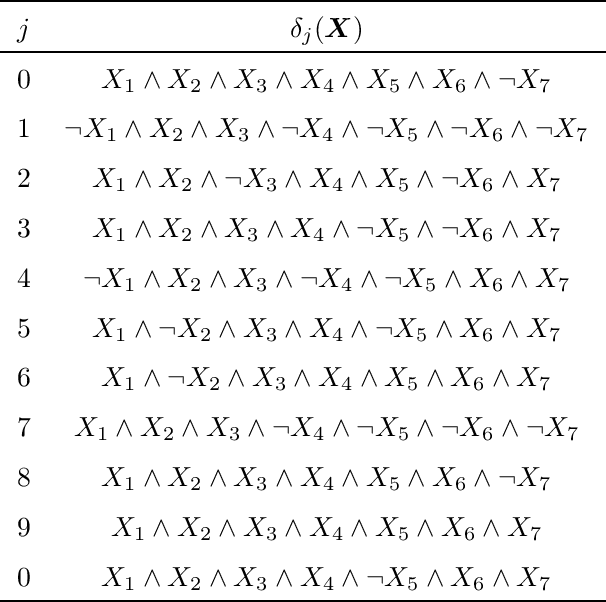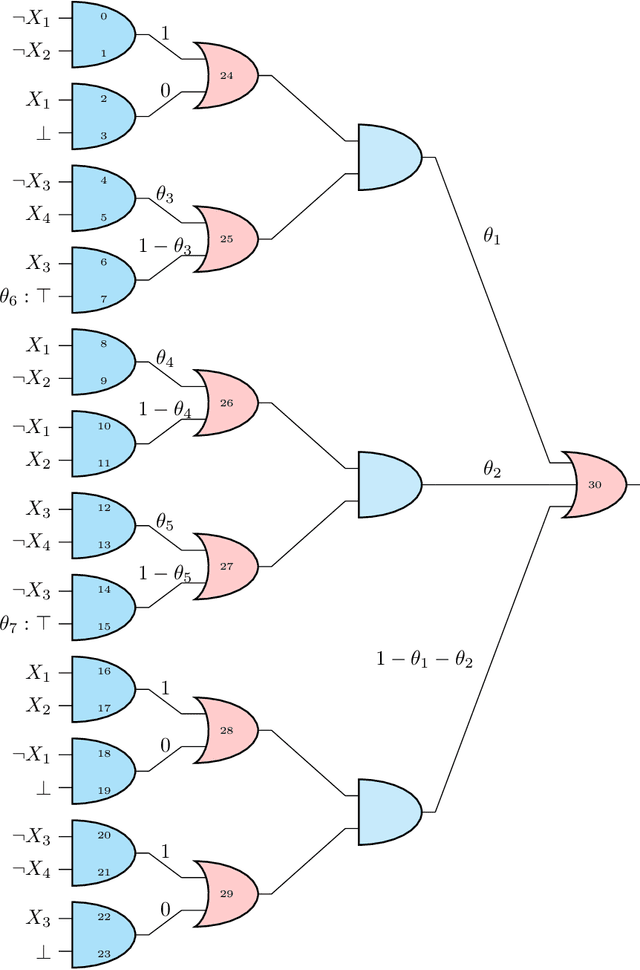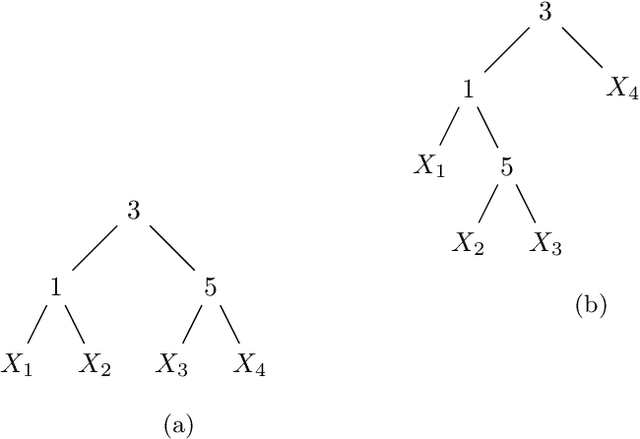Julissa Villanueva Llerena
Tractable Inference in Credal Sentential Decision Diagrams
Aug 19, 2020



Abstract:Probabilistic sentential decision diagrams are logic circuits where the inputs of disjunctive gates are annotated by probability values. They allow for a compact representation of joint probability mass functions defined over sets of Boolean variables, that are also consistent with the logical constraints defined by the circuit. The probabilities in such a model are usually learned from a set of observations. This leads to overconfident and prior-dependent inferences when data are scarce, unreliable or conflicting. In this work, we develop the credal sentential decision diagrams, a generalisation of their probabilistic counterpart that allows for replacing the local probabilities with (so-called credal) sets of mass functions. These models induce a joint credal set over the set of Boolean variables, that sharply assigns probability zero to states inconsistent with the logical constraints. Three inference algorithms are derived for these models, these allow to compute: (i) the lower and upper probabilities of an observation for an arbitrary number of variables; (ii) the lower and upper conditional probabilities for the state of a single variable given an observation; (iii) whether or not all the probabilistic sentential decision diagrams compatible with the credal specification have the same most probable explanation of a given set of variables given an observation of the other variables. These inferences are tractable, as all the three algorithms, based on bottom-up traversal with local linear programming tasks on the disjunctive gates, can be solved in polynomial time with respect to the circuit size. For a first empirical validation, we consider a simple application based on noisy seven-segment display images. The credal models are observed to properly distinguish between easy and hard-to-detect instances and outperform other generative models not able to cope with logical constraints.
 Add to Chrome
Add to Chrome Add to Firefox
Add to Firefox Add to Edge
Add to Edge